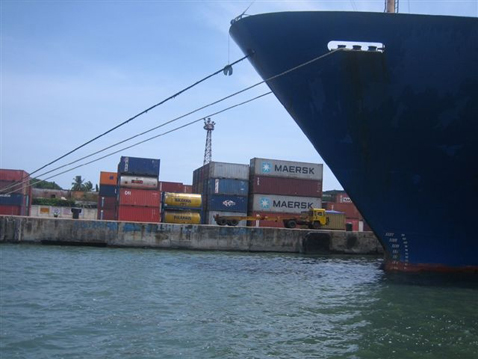
In a bid to decongest the country’s road and railway networks and encourage coastal and inland waterways transportation, the Ministry of Shipping is initiating a scheme under which certain identified commodities, containerised cargo and automobiles when moved through coastal shipping in various forms will be monetarily incentivised. The commodities identified for incentivising under the scheme have high potential for transportation through coastal and inland waterways but are currently reliant on other modes of transportation.
The Scheme for Incentivising Modal Shift of Cargo, in addition to promoting coastal shipping and inland waterway transportation as a viable alternative to road and railway transportation, aims to minimise the environmental impacts as well as the social costs of congestion in road and railway networks. It will initially be implemented during the period April 1, 2015-March 31, 2017 of the 12th Five-Year Plan. A provision of Rs.295.87 crore has been made for implementation of the scheme during the plan period. The scheme will be reviewed at the end of the plan period for continuation in the 13th Five-Year Plan.
The SIMSC can be availed by shippers who transport the identified categories of cargo through coastal shipping or inland waterways or both using Indian flag vessels, river sea vessels or barges. The coastal shipping or inland waterway routes through which the eligible cargo is transported should involve at least one major port, designated non-major port or Inland Waterways Authority of India terminal/jetty at the point of loading or discharge. The shipper is the person who has ownership of the cargo and may be the consignor or the consignee. The categories of cargo eligible for incentives under the scheme include bulk or break-bulk cargo commodities such as fertilisers, food grains, marbles, tiles, sugar, edible salt and over-dimensional cargo, any type of commodity carried in containers in full container load and automobiles in the form of two wheelers, three wheelers and four wheelers (HMV & LMV). In case of trucks or trawlers carrying automobiles, containers (any commodity) or identified bulk or break-bulk cargo that are transported on Ro-Ro vessels, the incentives will be provided only for the respective commodities.
The Ministry of Shipping in its guidelines for implementing the scheme has fixed the rate of incentive for each of the identified categories of cargo. For transportation of bulk or break-bulk cargo pertaining to the seven commodities, the shipper will be eligible to get incentive at the rate of Rs.1 per tonne per nautical mile up to a maximum of 1,500 nautical miles in each trip starting from origin and ending at the destination. Transportation of any commodity in containers in full container load will be eligible for an incentive at the rate of Rs.3,000 per TEU. The transportation of any commodity through forty feet or other larger sized containers will be incentivised based on number of times the said container size can be converted into TEUs. In case of vehicles transported through Ro-Ro vessels, the rate of incentive has been fixed at Rs. 300 per two-wheeler, Rs.600 per three-wheeler and Rs.3,000 for other vehicles.
The SIMSC will be implemented using the Port Community System. The shippers eligible for grant of incentives under the scheme have to register on PCS at the Indian Ports Association website. The PCS is a single technology based platform that brings together all stakeholders and shares information on cargo movement at ports. It is managed by IPA.











